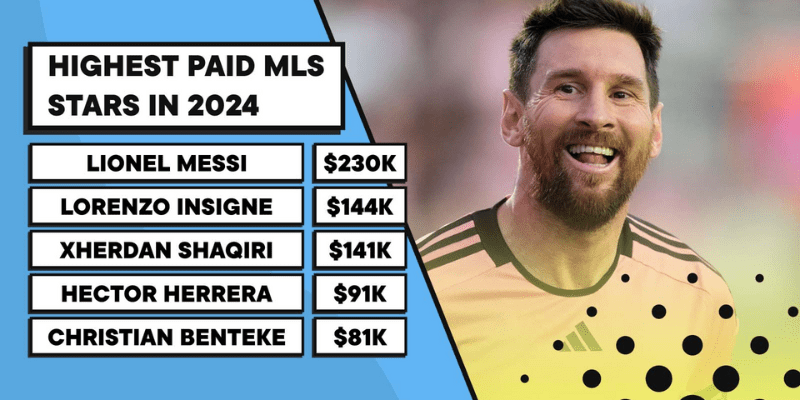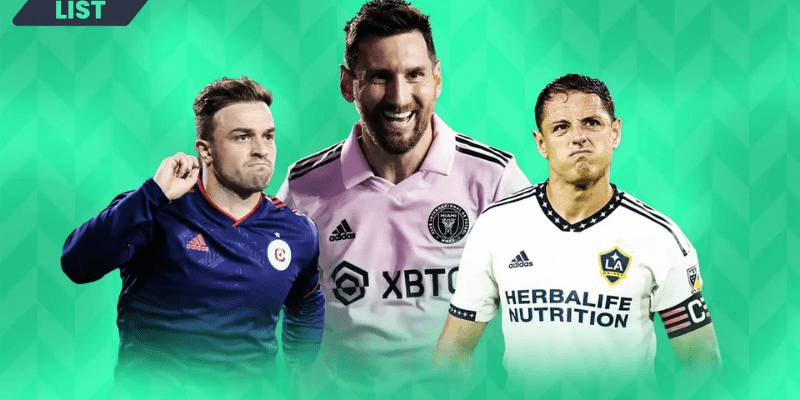Yes — MLS players absolutely get paid. But exactly how much depends on their experience, status, team, guarantees, and foreign-star status. In this article, AdiyaBall will walk you through everything you want to know about do MLS players get paid, with real numbers, rules, and comparisons so you know what the world’s fastest-growing soccer league is really offering.
What is MLS and the Salary Landscape

Major League Soccer (MLS) is the top professional soccer league in the U.S. and Canada. Because it’s in North America, its salary structure is very different from many European leagues: there’s a salary cap, designated players, allocation money, minimum wages, reserve or senior roster slots, and guaranteed compensation.
Here are the key features:
- Players are under contract — base salary plus bonuses and guarantees. What is guaranteed means the club promised to pay no matter what (barring extraordinary breach or injury clauses), even if performance or playtime goes down.
- There’s a senior roster (slots 1–20ish), and lower tiers like supplemental, reserve, homegrown, etc. Those lower tiers often have much smaller salaries.
- The “Designated Player Rule” (aka Beckham Rule) lets clubs sign stars outside the usual salary cap limits. These players often get huge numbers.
So when we answer “do MLS players get paid?” — yes, but there’s a huge spread. Let’s break it down in detail.
How Much Do MLS Players Earn in 2025

Here are current salary figures and rules as of the latest MLS / MLS Players Association guide:
Minimum and baseline salaries
- The Senior Minimum Salary in 2025 is $104,000 for senior roster players.
- The Reserve Minimum Salary (for younger players, typically under 25 in slots 25–30 or so) is $80,622.
Average MLS salary
The typical or average salary for an MLS player (considering all contracts and guaranteed compensation) in 2025 is around $594,000.
This number hides a lot: many players make much less, especially in reserve or homegrown roles; a few superstars make multiple millions and pull the average upward.
Top earners
- Lionel Messi remains the highest-paid player in MLS, with a guaranteed compensation of $20.4 million perr for Inter Miami.
- Other star players, particularly “Designated Players,” also earn multiple millions. Their base salaries and bonuses push them far above the average.
Salary cap & budget charge
- The salary budget charge (cap on what counts toward roster budget) in 2025 is $743,750 per player in many cases — beyond that, teams use mechanisms like Designated Players or Targeted Allocation Money to pay more without fully counting against cap.
- Teams do have a total payroll, and for example, Inter Miami has a record payroll (guaranteed compensation) of about $46.8 million for its squad, which is more than many other teams spend in total.
What Factors Influence How Much an MLS Player Gets Paid

Not every player gets the same deal. Several variables determine pay:
- Player status / experience
- Starternational players (especially those signed under the Designated Player rule) can command huge pay.
- Veterans with proven MLS or international performance often negotiate higher base salaries.
- Younger players, reserve roster, homegrown, or never-starters tend to have lower pay.
Guaranteed compensation vs base salary
- Base salary is what they get for playing. Guaranteed compensation includes base salary plus guaranteed bonuses, signing fees, and sometimes options. So a player with a lower base might still be earning more due to bonus-structures.
- Roster slot / contract type
- Are they in a senior roster slot? Are they in a reserve or supplemental slot? Are they younger or homegrown? These categories often come with smaller minimums and less luxury.
- League rules, salary cap, allocation money
- MLS uses budget charge caps, allocation money (general, targeted), and the Designated Player rule to allow flexibility. Teams with more resources, higher revenue, or big markets often spend more to attract stars.
- Team’s financial power and market
- Big clubs in large markets (or with big owners) are more willing (and able) to spend more. Inter Miami, LA Galaxy, etc., tend to have higher payrolls than smaller market clubs.
Comparisons & Trends: MLS vs Other Leagues
To understand how MLS pay stacks up:
- While MLS salaries are rising, they are still generally below top European leagues (Premier League, La Liga, Bundesliga, etc.) when comparing stars. But for many players, MLS provides better pay than lower European tiers or smaller leagues.
- The gap between average players and superstar Designated Players in MLS is large (millions). The income inequality is visible.
- MLS minimums and average salaries have increased over time, with recent collective bargaining agreements pushing up minimum wages, reserve salaries, and budget charge limits.
Common Questions About MLS Pay
Do all MLS players get guaranteed money?
No. Only the guaranteed compensation part of a contract ensures full payment regardless of performance or playing time (subject to contract clauses). Some bonuses are performance-based or conditional; some contracts may have non-guaranteed parts. But all base salaries in MLS are paid, and many contracts include guaranteed bonuses.
Can a player make millions in MLS?
Yes. Star players with high profile can make multimillion-dollar contracts. The top of the scale (e.g., Messi) is $20 million+ in guaranteed compensation. Even many Designated Players make several million. Those are exceptions, though—they are the exception, not the rule.
Do younger or backup players make enough to live off?
This varies. Some backup, reserve, or homegrown players make near the minimums. While it’s not the kind of money superstars get, it is professional salary, often enough depending on the cost of living. But it’s far less glamorous. Many make under a few hundred thousand dollars a year, which for professional sport is decent, but compared to star contracts it’s modest.
Summary Numbers Snapshot (2025)
Here’s a quick snapshot of salary tiers in MLS in 2025:
- Top star / Designated Player: $5 million to $20+ million guaranteed compensation.
- Established starters / veterans: Hundreds of thousands to a few million.
- Average MLS player across the league: Approximately $594,000/year.
- Senior roster minimum: ~$104,000.
- Reserve minimum: ~$80,622 (for younger / reserve slots)
Why “Do MLS Players Get Paid” Is a Question Many Ask
Because many fans see “MLS” and picture it as secondary to European powerhouses or smaller local leagues. Also:
- Not all players are famous; many are young, homegrown, or fringe, so their pay is far lower.
- Some contracts or payment details are complex—bonuses, allocations, guaranteed vs non-guaranteed —so it’s not always obvious how much a player really “takes home.”
- As MLS develops, salary transparency has improved, so people can now see real numbers and ask the right questions.
Conclusion
Yes, MLS players get paid — and depending on who you are, how good you are, and where you play, that pay can range. From minimums of around $80,000-$100,000 for reserve or young players, to average players making close to $600,000, to stars like Messi pulling in $20 million+, the spread is vast.
If you want, AdiyaBall can also dig into take-home pay (after taxes, living costs, etc.), or compare MLS versus specific European leagues — which shows even more about how lucrative it really gets. Do you want me to pull that together?






